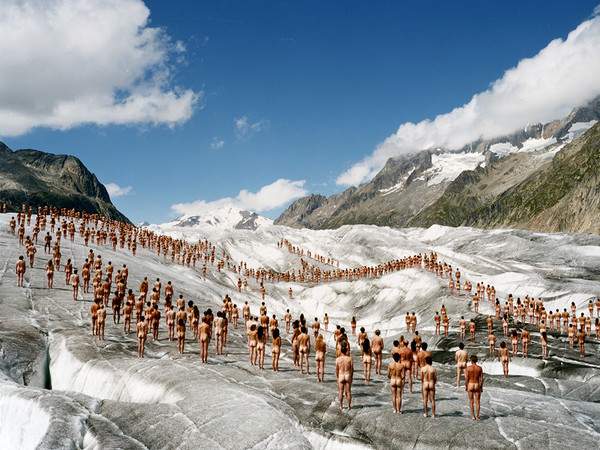The body in art from the 1950s to the present: an exhibition in Locarno
The Ghisla Foundation presents the exhibition Look at me! The Body in Art from the 1950s to the Present, a traversal reading of art, from the postwar period to the present, through the theme of the body in photography, in the works of international artists and photographers. An image by the great American Irving Penn, dated 1949-1950, introduces the exhibition, curated by Angela Madesani and Annamaria Maggi, which will be open to the public from Sept. 8, 2019, to Jan. 5, 2020.
Look at Me! is an articulate investigation through the medium of photography, which, from the socially engaged works of the 1960s and 1970s, leads to the great authors of photography of the 1980s and reaches all the way to contemporary times.
“The perspective from which we started is an investigation of the relationship between the female and male body and the research of some important artists who have worked with cinema, video, photography, and installation. A research that comes out of the reductive concept of gender to put in dialogue artists and works that are very different from each other,” says Angela Madesani.
“The body,” explains Annamaria Maggi, “in the history of art is the most ancient subject: since the earliest forms of representation, and in many ways still today, the human body is the main subject of different artistic practices. Without the body there would be no art. In the past, the human figure has been the indispensable tool for communicating stories and giving visible form to feelings, beliefs and concepts; even today, despite the multiplication of non-figurative trends and practices that have followed in the last century, the body still remains the protagonist of the research of many of the most radical and interesting contemporary authors: the body continues to be called by art to be a symbol.”
The works, chronologically placed between the 1960s and 1970s, almost always bear witness to performative actions as in the case of Marina Abramovic, Vito Acconci, Urs Lüthi, Ana Mendieta, Fabio Mauri, Bruce Nauman, Denis Oppenheim and Gina Pane.
Works by great photographers, who have placed the body, at the center of their research, are then proposed, such as Robert Mapplethorpe with images of male nudes, in a mostly sadomasochistic and homoerotic key.
Fashion, advertising, are the focus of the work of one of the most irreverent authors of photography of the last thirty years, David Lachapelle: his images with very strong colors present sometimes provocative subjects, as in the work in the exhibition.
Women in unequivocally erotic poses are portrayed by Japanese artist-photographer Nobuyoshi Araki. Also of the same nationality is Izima Kaoru, who asks the young models she photographs under what circumstances they would wish to die and how they would like to be dressed. Images of great elegance, in open contrast to the harsh, explicit ones of the American Nan Goldin. Eros and Thanatos is also the subject of the images in the exhibition by American Andres Serrano, in which old age and youth are set against each other.
Delicate, poignant are the self-portraits of Francesca Woodman, who committed suicide in her early twenties. Self-portraits are also those of Cindy Sherman, who has used transvestism and transformism since her first steps in art. So is Luigi Ontani, who since the 1970s has been self-portraying in various guises. The 1990s work of Englishman John Coplans consists of self-portraits of the artist as an old man in which the signs of the passage of time are highlighted. Women, also in erotic and voyeuristic declinations, are the subjects of images by French artist Bettina Rheims.
Subjects of Spencer Tunick ’s large photographs are groups of naked people portrayed in disorienting contexts, as in the work in the exhibition, which has as its backdrop the greatAletsch glacier in Switzerland.
Also on view is a large work by Vanessa Beecroft, one of the most important artists on the contemporary Italian scene, a creator and director for more than two decades of performances in which young women give life to tableaux vivants of different natures.
The body, hers, is the focus of Iranian Shirin Neshat’s works, aimed at highlighting the complexity of women’s existential conditions in Iranian culture and their relationship with males. “My body acts as a barometer, it becomes a needle that connects people from different times and places,” said the South Korean artist, New Yorker by adoption, Kimsooja.
Collages consisting of photographs of human limbs are the subject of Peter Welz’s Study for a portait, in which the body takes on an entirely different significance from the other works in the exhibition.
Same Same But Different are two very large photographs by Stefano Scheda, set up opposite each other, in which the bodies of two naked men, one white and one black, emerge from the sea and greet each other by raising their arms. A work that invites reflection, to go beyond appearances, at a time in history when fear of the different seems to have become the watchword.
The exhibition is accompanied by a catalog published by Scalpendi Editore.
For all information you can call (+41) 91 751 01 52 or send an e-mail to info@ghisla-art.ch.
Pictured: Spencer Tunick, Aletsch Glacier, Switzerland (2007), Fujicolor crystal archive print, 120x150 cm.
Source: release
 |
| The body in art from the 1950s to the present: an exhibition in Locarno |
Warning: the translation into English of the original Italian article was created using automatic tools. We undertake to review all articles, but we do not guarantee the total absence of inaccuracies in the translation due to the program. You can find the original by clicking on the ITA button. If you find any mistake,please contact us.




























